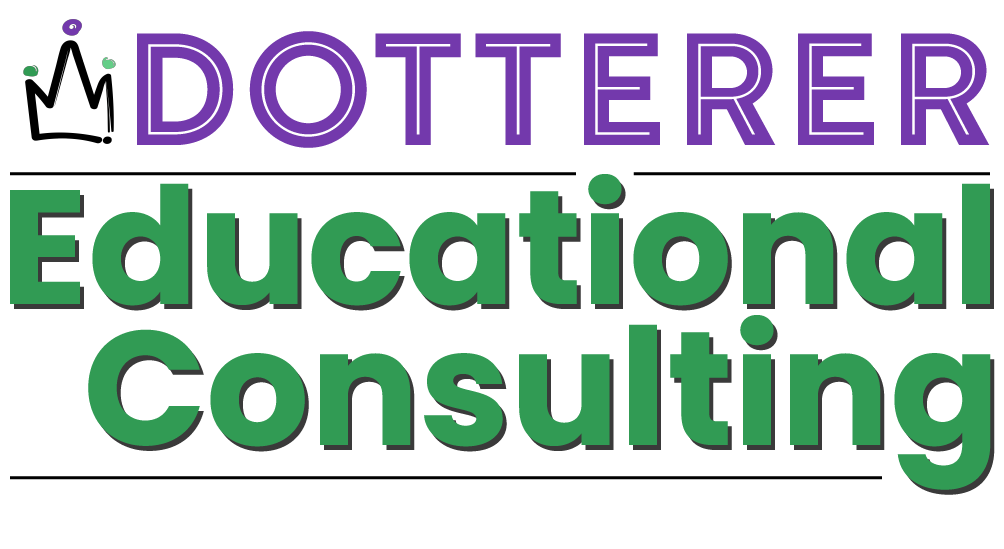Does your child have dysgraphia?
If any of the symptoms below are familiar, it’s likely your child has dysgraphia.
Download the free parents’ guide to dysgraphia to learn how you can help transform your child’s writing struggle.
- Avoid handwriting
- Awkward pencil grasp
- Awkward letter appearance
- Breaks pencils often
- Difficulty managing margins
- Hand cramps or pain
- Intensely watching his/her hand when writing
- Pencil pressure is too light
- Poor fine motor skills
- Unorganized paragraphs
- Unusual hand or paper position
- Written Expression does not meet expectations
Dotterer Educational Consulting equips adults so they can help and advocate for their children.
We do not work with children directly. However, you can use these resources to find the help your child needs.
We offer free and paid programs to help you better understand your child.

Public School Parents
Every child deserves a Free Appropriate Public Education (FAPE) according to the Individuals with Disabilities Education Act 2004 (IDEA). We support parents by reviewing documents in preparation for IEP meetings. An IEP is an Individualized Education Program. It is the care plan for your child’s school day.

Private School Parents
According to the Regulations, your student can also receive the support that is supplemental to the classroom. Your school may receive federal funds for certain areas of the school. If so, request that they have your child evaluated. Ask your Head of School, in writing, what the process is in your building. We have the staff to help if you get stuck.

Homeschool Parents
You have taken on the challenge of your child’s entire education. Kudos. This task is just as challenging as teachers in a traditional school building. Talk with our homeschool specialist to arrange workshops for your homeschool co-op or attend any of the professional development trainings we offer.
Free Resources
Body Sentence Alphabet
The Body Sentence Alphabet is a visual, auditory, and kinesthetic (movement) alphabet to improve spelling and vocabulary.
Frequently Asked Questions
The Writing Glitch Podcast
Listen to The Writing Glitch on your favorite podcast app.
Other Resources
Handwriting Brain-Body DisConnect
Get a signed copy of Cheri’s book (US only)
Defeat the frustration of handwriting avoidance. Build confidence and competence in your understanding of dysgraphia. Be the dysgraphia authority in your school.
Book Cheri to Speak
Consider having Cheri speak to your parent organization. Learn more
Additional Resources
The longer writing is a challenge, the longer it will take to remediate it.
Proactive action is essential to supporting students with handwriting problems.
Practice is the other essential.
Keyboarding is important.
A keyboard will never replace handwriting.
Mission
Our mission is to help teachers, therapists, and parents raise the next generation of leaders by hacking barriers to writing success (dysgraphia).
About
At Dotterer Educational Consulting, we know that the physical and emotional cost of education is holding back our future leaders because students have difficulty accessing their way to learn. We design professional development tools that help ALL students, including 1/3 of the population with writing challenges, engage in learning to become the leaders they were meant to be.
Key Characteristics
Clarity: We believe that narrowing the gap between strengths and weaknesses can occur in the whole classroom setting through collaboration and awareness by taking risks and experimenting with emerging best practices. Being passionate about teaching is not limited to one profession. Everyone has something to share, even the students.
Community: We believe that encouraging the heart is created through community and builds students’ social-emotional learning across their lifespan. Let’s celebrate the smallest of victories and nurture gratitude.
Competency: We believe that self-development is both professional and personal and is a lifelong process. We need to unleash the servant kings and queens in ourselves and our students by tapping into every student’s learning behaviors.

